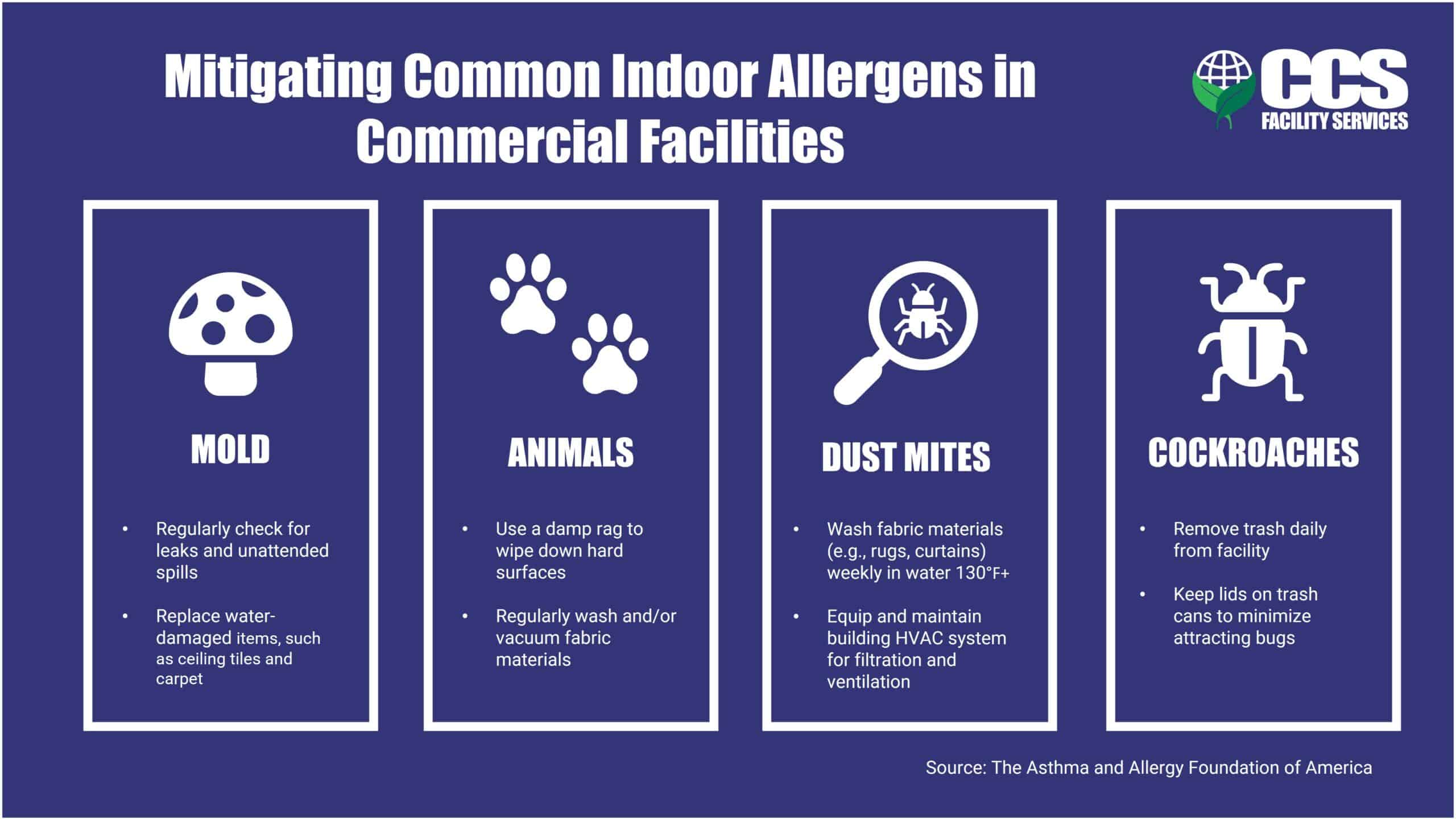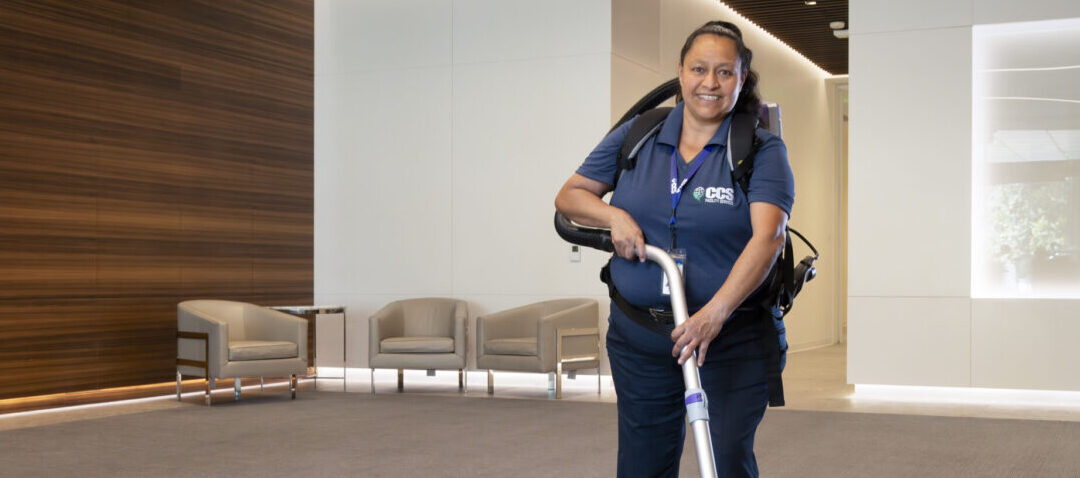More than 50 million Americans suffer from allergies every year, making it the 6th leading cause of chronic illness in the United States (American College of Allergy, Asthma, & Immunology). Many forms of allergies can be aggravated by improper cleaning and irregular maintenance within a commercial facility. If left unmitigated, individuals with allergies may begin experiencing congestive issues, dizziness, skin reactions, breathing difficulties, and, in the worst cases, hospitalization. At CCS Facility Services, cleaning for health not only means cleaning against infectious diseases but also cleaning to minimize allergies for the staff, visitors, students, teachers, guests, patients, and more who are served by our customers’ facilities. Below, we have created a list of common allergens and strategies to minimize or prevent allergic reactions within commercial buildings.
A common source of allergens within a commercial facility is mold, with 1000-plus different species growing just within the United States alone. Typically, indoor mold is caused by leakages or unattended spills. The best way to prevent this allergen from infiltrating a facility is to direct janitorial staff to clean liquid spillages immediately when found as well as regularly monitor sources where leaks could occur, such as water fountains, bathrooms, kitchens, and patient rooms. If mold starts growing, mitigation efforts could include replacing water-stained ceiling tiles and having a building engineer do a thorough check of water pipes for leaks.
Dust mites populate almost all indoor spaces, are seemingly invisible to the naked eye, and feed off sluffed skin cells. They pose a challenge for commercial cleaning as they measure about one quarter to one third of a millimeter and are almost impossible to irradicate. With the right steps taken, however, facilities can significantly reduce presence of dust mites and mite waste. Experts recommend using water hotter than 130 degrees Fahrenheit to wash rugs, carpeting, employee uniforms, and other materials that may be collecting dust mites. Performing this high temperature cleaning effort weekly will kill most mites. Building maintenance also plays a role in combatting dust mites as they (and the other allergens on this list) can float in the air when disturbed. Using and maintaining a certified HVAC system can assist in airborne dust mite mitigation in two ways: the system’s filter will catch mites in the air and thus improve indoor air quality, and consistent airflow will aid overall building ventilation. You can learn more about the importance of proper facility ventilation on our blog.
While cockroaches generally are linked to unkept buildings, they are, unfortunately, much more common and can be found in even the cleanest of facilities. In fact, the National Pest Management Association says that 63% of buildings in the United States contain cockroach allergens, with that number higher in more urban areas. These unwanted pests can spark an allergic reaction in 17-41% of Americans, according to the National Institutes of Health. Additionally, a review by the Institute of Medicine has shown a link between early cockroach allergen exposure and asthma development in preschool aged children, creating an enduring need for preventative cleaning and maintenance within occupied facilities. Washing curtains, rugs, and other fabric items regularly is an effective way to remove all types of allergens that could be building up without notice. As a preventative measure against attracting cockroaches specifically, remove trash daily and use waste bins with lids.

Although many commercial facilities do not allow animals (other than service animals), animal allergens can still be still present. This allergy, which affects 15% of Americans, is caused by animal dander (dead skin cells), urine, and saliva—and not pet hair/fur. These allergens can stick to clothes and furniture and can remain airborne for long periods of time, according to the Asthma and Allergy Foundation of America. Removing animal dander can be difficult and requires regular vacuuming of fibrous surfaces as well as diligent disinfection of hard surfaces. The National Institute of Environmental Health Sciences recommends janitorial staff use damp mops and rags for dust removal as dry cloths can cause allergens to stir up into the air. Regularly washing staff uniforms also helps reduce allergens that are brought into the facility from the outside.
Allergens are a nuisance – and sometimes a serious health threat – to millions of Americans daily, which is why cleaning for allergies is another solid step facilities can take to protect building occupants’ comfort and overall wellbeing.
Visit our website to learn how CCS Facility Services can help clean for the health of your building.




